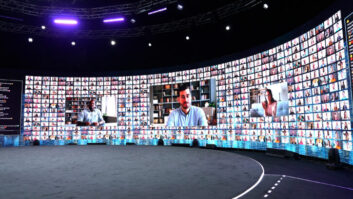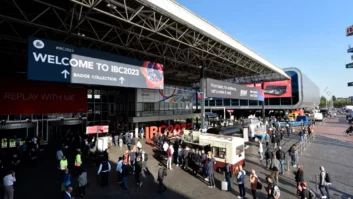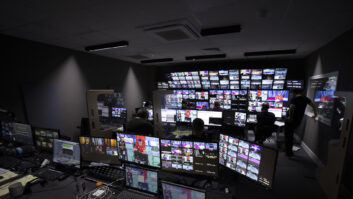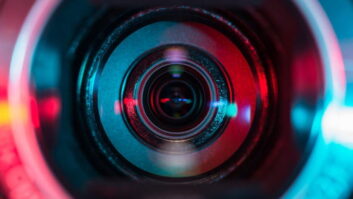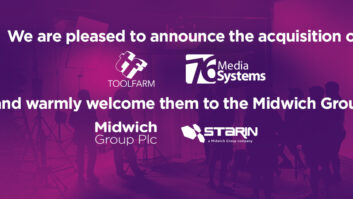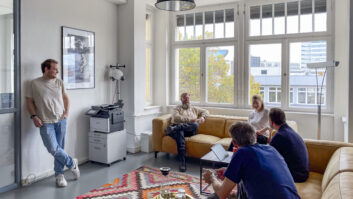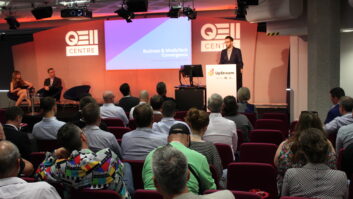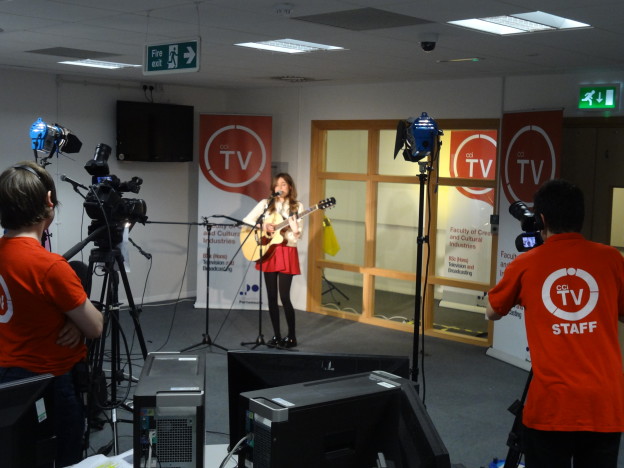
The University of Portsmouth’s broadcast challenge started out in 2010 as a two-hour broadcast, which helped to summarise a learning objective of the BSc Television and Broadcasting degree course. Four years later, the challenge had grown. So, too, had the importance of the technology underpinning it.
In May 2014, the University of Portsmouth’s BSc Television and Broadcasting degree students set out to broadcast for a continuous 24-hours. To do that, they would need lots of content. They would need presenters with plenty of energy. And they would need a technological infrastructure that they could rely on.
The objective of the project was to test the students’ creative and technical skills on an extended live broadcast. The broadcast would also be used to showcase the students’ work from the last academic year, while raising money for six chosen charities.
Speaking before the 24-hour challenge, course leader Charlie Watts highlighted: “What we are attempting is going to be very hard to pull off, however, my students want to go into the television industry, and I think I’m partly responsible for getting major league broadcasters to look at what we are doing. This isn’t some webcam pointed at the same area for hours on end – this is a live, varied, passionate, multi-camera production that looks like network television, and anyone viewing will be knocked out by what our students are creating this year.”
The marathon broadcast featured a mixture of original programmes, narrated items, documentaries and short films that included student work celebrating the previous academic year. It opened and closed with CCI Live, the flagship programme of the Faculty of Creative and Cultural Industries (CCI). The challenge was split into six time zones. Each zone had a specialist student team focusing on a particular theme, and the live broadcast included local community collaboration, plus an international focus for foreign students.
The production was supported by three NewTek TriCaster systems, which controlled the live and pre-recorded content and the live stream to all of the campus TVs, the university website and the Portsmouth City Council big screen situated in Guildhall Square, Portsmouth.
PASSIONATE TEACHING STAFF
“I genuinely think many students choose to study within our school because they can see that the staff love their jobs and love the specialisms that they teach,” says Watts. “I also think it helps that we are all pretty down to earth people, and that coupled with our enthusiasm makes the learning environment extremely welcoming.”
Watts is passionate about his task: “Our prime mission is to facilitate and deliver a course that is focused on the inner workings of broadcast television and radio. The fact that we have our own TV channel and the ability to broadcast live from internal and external locations with a young and enthusiastic workforce is pretty fantastic.”
BREAKING NEW GROUND
Having started out with a NewTek TriCaster live production and streaming system in 2012, the students and lecturers have been allowed the freedom to learn, develop and break new ground with the technology. Gary Bown, principal lecturer and head tutor for all outside broadcast operations at the University of Portsmouth, explains: “If students want to go to the moon, we’ll build the rocket, as long as they agree to control the mission. Beyond the talent of our students, a key factor for this ambitious project is reliable technology, and we’re safe knowing that NewTek TriCaster is behind everything we’re doing. It’s the technology backbone to all of our plans, and an enormous element of our confidence that we would pull this off.
Chris Waddington, director of sales east, EMEA at NewTek, recognises the benefit of being able to facilitate practical working experiences: “Challenges like this provide a fantastic real-world broadcasting experience for students. We’re proud to see TriCaster at the heart of this operation, allowing the students to produce a professional, live streaming video programme that has the look of a major broadcast television show.”
Course leader Watts outlines why choosing the Tricaster solution was an easy decision: “Quite literally, the TriCaster was the most powerful studio in a box that we found, and it transformed how we worked within a few short weeks. We devised a course that at the time did not exist. Our mission statement was to teach and train students to be able to deliver weekly live TV programmes without fail, and once we had the broadcast server to help schedule and maintain content, the TriCaster slotted very neatly into place as the kit of choice. It transformed our ways of working and we quickly purchased another two as fast as we could.“
IMPACT TECHNOLOGY
As Watts points out, the day-long broadcast challenge was only the tip of the iceberg of the opportunities opened up to the BSc Television and Broadcasting degree. This is impact technology.
The TriCaster system is a holistic content publishing hub for all media coming into a live programme. It handles the broadcast output, as well as the multichannel delivery, simultaneous streaming and social media publishing, plus all the integration points in between, necessary for users to create, publish and repurpose their media.
The system offers remote control of a redundant system, router support for large-scale enterprise production, a 24-channel switcher, professional audio mixing, and up to 14 output destinations. And, with what is described as ‘the world’s most powerful integrated effects system’ now made even more powerful with some innovative visual effects, students and other operators have the tools they need to keep the audience hooked on every screen.
Watts continues: “The workflow required to populate a TriCaster is really well thought out, and this helps students plan their programmes in a particular way. Metadata and labelling is essential to a clean, well-organised programme and the TriCaster interface is well designed to help students really get to grips with what they intend to broadcast. It helps that broadcasters have also adopted the TriCaster as a viable solution for OBs, and the really essential matter is that live TV in the curriculum is a great way to nurture learning without a safety net.”
PROGRESSIVE LEARNING
For the university, and for the course, TriCaster has played a part in a wave of progressive education: “Our challenge quickly evolved from a two-hour all-live show, to a four-hour and then a six-hour broadcast,” says Watts. “Our Dean and Head of School then posed the challenge of a 24-hour show. That really changed everything for us, and it really helped put my course on the map and demonstrate to a great many people what we were capable of. It also helped that we raised money for charity throughout the 24-hour challenge – I’m delighted we raised £1,500 and provided a student experience that they will never forget.
“We went into our 24-hour broadcast challenge with eyes wide open and some factors were always going to be unknown until we tried it. All of our TriCasters had to be operating for over 26-hours and with continual use I can confirm that there was not one blip or restart required. That’s a hell of a recommendation for some serious pieces of kit. If you want to put on a memorable show, all you need is a plan, a workforce willing to go into battle, some hopes, dreams and a few TriCasters. If you have all that you’ll be fine.”
